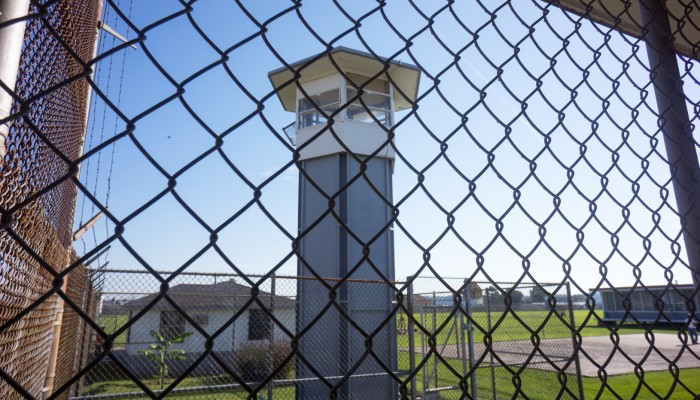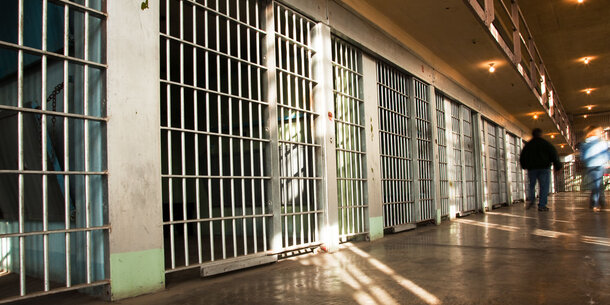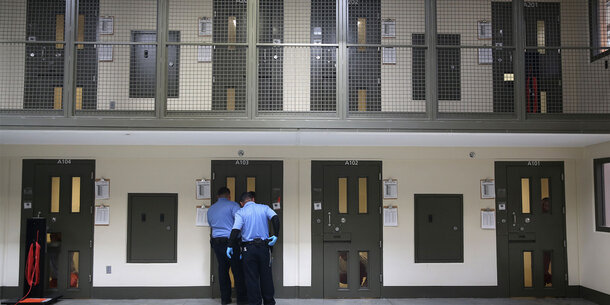For decades, prisoners in American correctional facilities have worked for no wages or mere pennies an hour. As the United States attempts to reduce transmission of Covid-19, more than a dozen states are now relying on this captive labor force to manufacture personal protective equipment badly needed by healthcare workers and other frontline responders.
Prisoners in Missouri are currently earning between $0.30 and $0.71 an hour to produce hand sanitizer, toilet paper, and protective gowns that will be distributed across the state. In Louisiana, prisoners are making hand sanitizer for about $0.40 an hour. And in Arkansas, where incarcerated workers are producing cloth masks for prisoners, correctional officers, and other government workers, their labor is entirely uncompensated.
This unprecedented health emergency is re-exposing how our country’s long-held practice of paying nothing or next-to-nothing for incarcerated labor, with no labor protections, is akin to modern-day slavery.
Prisoners are not protected by the Fair Labor Standards Act (FLSA), the federal law establishing minimum wage and overtime pay eligibility for both private sector and government workers. In 1993, a federal appeals court held that it is up to Congress, not the courts, to decide whether the FLSA applies to incarcerated workers.
Courts have also ruled that the National Labor Relations Act, which guarantees the right of private sector employees to collective bargaining, does not apply in prisons.
Even worse, prisoners are excluded from the U.S. Occupational Health and Safety Administration protections that require employers to provide a safe working environment. This dehumanizing lack of protection for prison workers has long subjected them to conditions that have endangered their physical safety.
Amid a health threat that worsens in crowded environments, many prisoners are working without any mandated protections. Congress must amend the language of federal employment protections to explicitly extend to work behind bars.
Forced labor in prisons has its roots in the post-Civil War Reconstruction period, when Southern planters faced the need to pay the labor force that had long worked for free under brutal conditions to produce the economic capital of the South.
Though the 13th Amendment abolished “involuntary servitude,” it excused forcible labor as punishment for those convicted of crimes. As a result, Southern states codified punitive laws, known as the Black Codes, to arbitrarily criminalize the activity of their former slaves. Loitering and congregating after dark, among other innocuous activities, suddenly became criminal. Arrest and convictions bound these alleged criminals to terms of incarceration, often sentenced to unpaid labor for wealthy plantation owners.
In the following decades, Southern states — desperate for cheap labor and revenue — widely began leasing prisoners to local planters and Northern industrialists who took responsibility for their housing and feeding, a practice known as convict leasing.
Under this system, the captive labor market worked long hours in unsafe conditions, often treated as poorly as they had been as slaves. Records approximate that on an average day between 1885 and 1920, 10,000 to 20,000 prisoners — the overwhelming majority of them Black Americans — continued to toil under these insufferable circumstances.
In the 1930s, a series of laws prohibited state prisons from using prison labor, but the federal government continued to rely on this workforce to meet the demands of the rapidly changing markets of mid-century. By 1979, Congress passed legislation allowing state corrections officials to collaborate with private industries to produce prison-made goods, birthing the modern era of prison labor.
Today, approximately 55 percent of the American prison population works while serving their sentences. Prison jobs are broadly divided into two categories: prison support work — such as food preparation, laundry services, and maintenance work — and “correctional industries” jobs, in which prisoners might make license plates, sew military uniforms, or staff a call center. It is prisoners in correctional industries who are currently being deployed to help meet the nation’s need for protective gear.
While so many behind bars are manufacturing items the country desperately needs to combat our current health crisis, their low wages and lack of labor protections — among myriad other factors — mean they are not accorded the same benefits or recognition as other workers.
What’s more, the measly cents per hour that is typical compensation across often-dangerous prison jobs is not nearly enough to cover the court fees and fines, restitution, child support, and room and board expenses that most state departments of corrections deduct from prisoners’ earnings. When there is anything left, it is barely enough to pay for commissary goods such as food, hygienic products, and toiletries, let alone marked-up email services that prisoners rely on to stay in touch with their loved ones. Despite working for years, many prisoners are left with thousands of dollars in crippling debt by the time they complete their sentences.
In 2018, prisoners in dozens of facilities across the country went on strike and issued a list of demands, which included “an immediate end to prison slavery” and that prisoners be “paid the prevailing wage in their state or territory for their labor.”
This time of national emergency requires that everyone do their part to slow the spread of coronavirus. The significant shortage of face masks, protective gowns, and hand sanitizer that is putting the lives of our frontline workers in jeopardy necessitates bold and swift action. But if the states and federal government are going to rely on correctional labor to manufacture this equipment, they need to improve the wages and labor protections of our incarcerated workers. To fail to do so is not far off from the devaluation and brutalization of slave labor that was ostensibly abandoned a century and a half ago.






